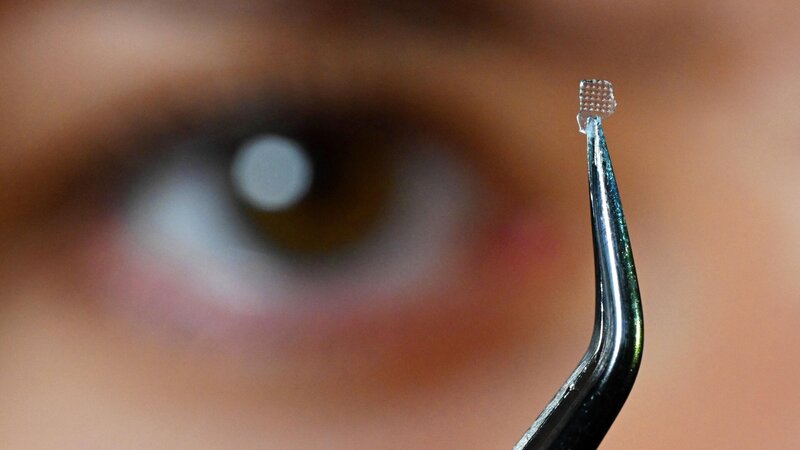A research group from the University of Jena has developed a small optical lens, only a few millimeters in size, whose refraction changes in the presence of gas. As researchers report in the journal Nature CommunicationSuch “smart” behavior of the microlens is provided by the hybrid glass material from which it is made. The molecular structure of the lens consists of a three-dimensional lattice with cavities that can accommodate gas molecules and thus affect the optical properties of the material.
Very sensitive glasses
“With the support of the Carl Zeiss Foundation, we are developing so-called ultrasensitive materials,” explains Lothar Vondracek, professor of glass chemistry at the University of Jena.
“In the case of a hybrid glass lens, this means that it refracts light more or less strongly depending on whether the gas is absorbed by the lens material.” The task was to transfer classical glass forming methods to these special materials.
“The metal-organic frameworks we use here are being researched and developed as gas storage or separation materials,” Vondracek says.
“But most of these substances decompose when heated and are therefore very difficult to form,” adds Oksana Smirnova, PhD student and lead author of the publication.
Jena researchers, Dr. D., who serves as research group leader in the Department of Glass Chemistry. Together with Alexander Knebel, he first had to develop a synthesis process suitable for high-purity materials. They then needed to determine the optimal conditions under which the material could be created.
“We melt the material and transfer it to the 3D printed mold, where it is pressed. “This process allows you to choose almost any shape you want,” explains the chemist. “We deliberately chose the shape of the lens because even the smallest impurities can be seen in the lens, as they directly affect the optical properties.”
Formation diversity
Vondracek explains that this new process now basically goes beyond the specific application as a microlens, allowing the creation of a wide variety of shapes and geometries. “Since these highly responsive materials respond to multiple influences simultaneously, they can be used for logic circuits, for example.
“This means that two conditions are specifically relevant for the observed reaction. If a beam of light hits the lens and the gas is simultaneously absorbed by the lens material, the light is refracted in a specific way and combined feedback is provided.”
Gas separation membranes whose optical properties change when gas molecules are present are also possible. By using such optical components in sensor technology, measurement methods can be made more efficient, economical and “smart”.
Source: Port Altele
